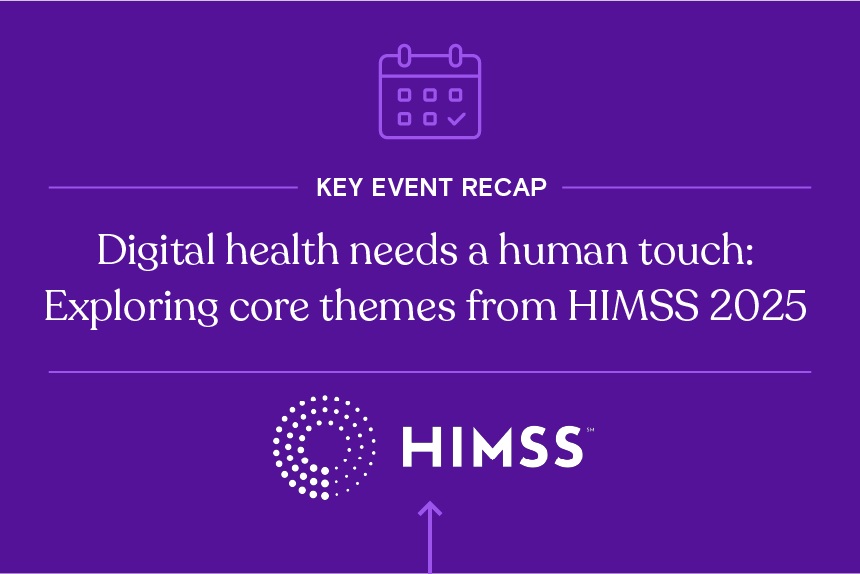When a patient is sick, injured, or in need of treatment, the healthcare provider’s goal is to deliver the highest quality care possible. This is true for all types of care facilities, but ensuring patient safety and positive patient outcomes is paramount in skilled nursing facilities (SNFs).
The question, then, becomes: How do you ensure you’re constantly providing exceptional care? And, as a follow-up, what can SNFs do to continue to meet and exceed patient expectations?
Fortunately, over the years, the Centers for Medicare and Medicaid Services (CMS) have rolled out value-based purchasing programs that structure provider reimbursements with a greater emphasis on quality of care and performance. The Skilled Nursing Facility Value-Based Purchasing (SNF VBP) Program, which began in 2018, was tailored to help improve the quality of care given in both short- and long-term nursing facilities and has been a huge step in the right direction for improved quality at these facilities.
What is quality improvement in nursing?
Quality improvement in nursing is about maintaining patient safety. It’s a systematic, data-driven approach to enhancing the quality of care an SNF provides. It’s not a one-time fix, but an ongoing process with the ultimate goal of improving patient outcomes, safety, and satisfaction.
To drive change in the nursing industry, CMS developed quality measures that score providers based on patient outcomes, rewarding providers that take the time to appropriately treat individual patient needs and steer clear of process-driven nursing traditions. Nursing facilities that do not comply with these quality measures may be fined by CMS.
With specific, quantifiable goals in mind, nursing facilities can measure their success and growth as quality healthcare providers.
How is nursing quality measured?
Following an assessment of a skilled nursing facility’s performance, the CMS will provide a quality rating score—sometimes it may appear as a star rating. This score is calculated from two different categories: short stay and long stay.
Short-stay quality measures are based on patients who stay in a nursing facility for 100 days or less, while long-stay quality measures are based on patients who stay in a nursing facility for 101 days or more. The specific quality measures are broad and varied and may differ between short-stay and long-stay residents. The CMS offers a more comprehensive list of quality measures as well as an in-depth explanation of why each metric is important.
Which quality measures CMS chooses to hold provider facilities accountable for can change over time based on feedback and further industry research.
Skilled nursing facilities ranked by NPR and quality rating
| Rank | Skilled nursing facility | State | Definitive ID | Quality rating | NPR |
| 1 | Twin Fountains Home | GA | 578292 | 2 | $263,821,571 |
| 2 | The Plaza Rehabilitation & Nursing Center | NY | 565291 | 5 | $111,534,447 |
| 3 | Ashby Ponds - Skilled Nursing | VA | 800572 | 5 | $110,852,418 |
| 4 | Boro Park Center | NY | 561497 | 3 | $108,919,777 |
| 5 | Masonic Village at Elizabethtown - Skilled Nursing | PA | 579259 | 5 | $92,072,228 |
| 6 | The Riverside Premier Rehabilitation & Healing Center | NY | 564049 | 5 | $89,825,920 |
| 7 | Isabella Center | NY | 566409 | 1 | $89,598,303 |
| 8 | Greenspring by Erickson Senior Living - Skilled Nursing | VA | 565675 | 5 | $87,796,364 |
| 9 | Pinnacle Multicare Nursing & Rehabilitation Center | NY | 571595 | 5 | $87,028,253 |
| 10 | Upper East Side Rehabilitation and Nursing Center | NY | 563899 | 5 | $85,652,295 |
Fig. 1 Data is from the Definitive Healthcare LongTermCareView product and the Centers for Medicare and Medicaid (CMS). Data accessed July 2024.
Benefits of quality improvement in healthcare
The above table shows some of the most financially successful skilled nursing facilities across the U.S., according to the most recent 12-month interval in our data. Beyond net patient revenue, the notable insight from this data is the varied quality rating scores among the top 10 SNFs.
When using quality rating data to make strategic decisions, there are two important considerations to keep in mind. First, quality measures aren’t benchmarks or thresholds: the score is calculated based on the average level of the facility’s performance across dozens of areas of care. Because of this, it’s prudent to dig deeper into an SNF’s performance to see specific areas in need of improvement, as one or two measures that score in a low percentile rank could skew the overall score and may falsely convey a facility’s quality of care.
Second, the CMS states that some quality measures only show patients’ health in the seven days before the quality assessment was done. This means that the quality measures may not show the residents’ health during the entire time between assessments.
Despite these two stipulations, analyzing quality measures can yield insightful results. At a high level, quality measures can help you understand a facility’s strengths, weaknesses, and areas of improvement across a range of patients and health conditions. And by comparing scores, you can see how skilled nursing facilities may be different from each other.
How can nursing quality be improved?
There are many ways SNFs can improve care quality. Nurses can start by being aware of the most common avoidable conditions that regularly plague patients and reduce facility quality scores:
- Falls and injuries
- Pressure ulcers
- Ventilator-associated pneumonia (VAP)
- Intravascular catheter-related infections
- Other healthcare associated infections (HAI)
Nurses should also be on the lookout for opportunities to improve patient safety. Medication errors, for example, are one of the leading causes of patient harm and death per year. Nurses play a critical part in preventing medication errors and should avoid distractions and disruptions when managing patient medications.
Another way nurses can improve patient safety is by taking extra precautions during patient handoffs. Clear communication when transferring essential information and patients between healthcare professionals should always be prioritized.
Decision-makers and executives at skilled nursing facilities can also implement strategies to improve care quality. Addressing nursing fatigue and burnout can lead to significant financial savings, and more importantly better patient outcomes. Nurses tend to work long hours over consecutive shifts in an already demanding work environment. A fatigued nursing staff could increase the risk of preventable patient harm, such as diagnostic and medication errors, patient misidentification, unsafe procedures, infections, and more.
Discover more
While quality measures offer useful information regarding a skilled nursing facility’s performance, they are just one piece of the puzzle. Other data points such as payor mix, technology installations, and clinical metrics can all provide vital insight into an SNF’s performance.
For a deeper dive into skilled nursing facilities, and to get hands-on with our data, start a free trial with Definitive Healthcare today.





